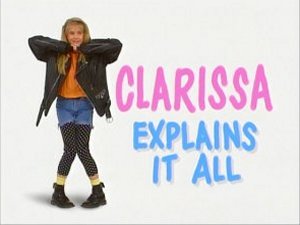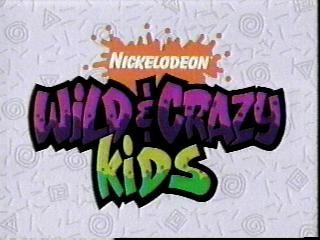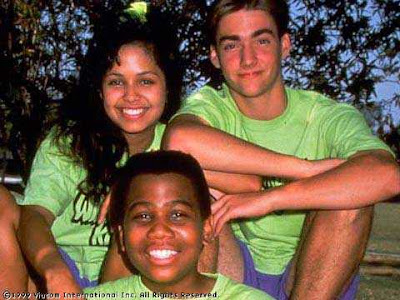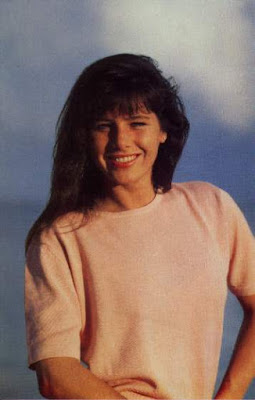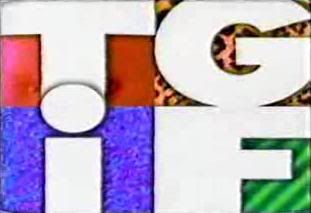
Parents in the 90s must not have considered the potentially detrimental effects of parking their kids in front of the TV for four or five straight hours. How else can you explain the endless list of hours-long program blocks marketed at TV-hungry kids in the 90s? Children's TV was shaping up to be the ultimate babysitter, seamlessly filling in every possible day and time slot during which kids might be loitering around the house. After all, why go outside and play with our Huffy bikes and Skip-Its when we could just experience it vicariously through the commercials? Those kids were always way more enthusiastic than we could ever be, anyway.
For a decade of children far less dependent on technology than today's kids, we sure watched a lot of TV. We can only imagine the future of children's programming as parents' growing anxiousness to keep their children satiated and entertained continues to grow. In our childhood years, though, we were content watching a few hours at a time and luxuriating in the laziness. It still had that delightful aura of the forbidden. Our parents may have tried their best to limit our TV hours, but at the end of the day (or the case of some of these blocks, the beginning) it was a lot easier to just let the mind-numbing glow of passive entertainment wash over us. It's like those parents who load up their grocery carts with organic kale and banana chips for their kids, but eventually cave to nuking some chicken nuggets. It may not be the right choice, but it's an easy one. As we grow into adults, we can certainly appreciate their laziness.
ABC's TGIF
TGIF reigned supreme when it came to Friday night kid's TV. Originally conceived in the late 80s as the "Friday Night Fun Club", ABC's kid-friendly block morphed into TGIF: Thank Goodness It's Funny. The original lineup included Perfect Strangers, Full House, Mr. Belvedere, and Just the Ten of US. A lot of pretty terrible short-lived shows cycled through TGIF over the years, but they were able to mask it with some solid favorites like Boy Meets World, Step by Step, Family Matters, and Sabrina the Teenage Witch. For every miscalculated move like Teen Angel, there always seemed to be a Dinosaurs waiting in the wings.
SNICK
SNICk was a brilliant marketing tool, as it mainly catered to the then-unclaimed tween demographic. The key to capturing the interest of 8-12 year olds is treating them like teenagers. I don't mean in a current Limited Too miniskirts and go-go boots way. This was thankfully far subtler. Nickelodeon shows with teenage characters and market them at tweens, a demographic that at times is likely to act too cool for kid's shows. SNICK premiered in 1992 featuring Clarissa Explains It All, Ren and Stimpy, Roundhouse, and Are You Afraid of the Dark? Though the lineup changed frequently throughout the years, Nick was pretty masterful at holding our fleeting attention spans. They threw in some goodies like The Secret World of Alex Mack and All That and we were hooked.
Nick in the Afternoon
Another wise and undoubtedly calculated move on the part of Nickelodeon, the network aimed to capture the at-home idling demographic of kids in the summertime. They installed a popsicle stick host with the hours-deliberating-in-the-Nick-boardroom moniker Stick Stickly. It was a great means of getting more mileage out of their reruns, packaging the block as a chance for kids to request their favorite classic episodes. For Nick, this meant they didn't have to come up with anything other than a popsicle stick and some googly eyes. Not too shabby.
The Disney Afternoon
There's no doubt Disney is great at hawking its animated goods to kids. The Disney Afternoon block was no exception, featuring endless variations of their always popular characters. The block premiered in 1990 with Adventures of the Gummi Bears, DuckTales, Chip n' Dale Rescue Rangers, and TaleSpin. Later shows included Darkwing Duck, Goof Troop, and the far-inferior Disney's Doug. The shows aired in the after-school hours, a perfect means of entertaining the growing number of latchkey kids left to fend for themselves with nothing but the remote control and a tube of Pringles.
FOX Kids
FOX Kids was a formidable franchise, despite the fact that it rarely aired the same shows two years in a row. Though the block opened in 1990 with animated shows like Bobby's World and the game show Fun House, the lineup changed regularly throughout its 12-year run. That's not to say there was no quality programming: FOX Kids played classics like Mighty Morphin Power Rangers, Animaniacs, Tiny Toon Adventures, and Goosebumps. My favorite, though, was always the magazine. For some as-of-yet unexplained reason, this block of children's TV shows warranted its own publication. Sometimes we got it free with Pizza Hut orders, others it came in the mail, but whatever route it took to my mailbox the glorified promo was inexplicably awesome.
Nick Junior
Let me just say, that Face mascot is actually pretty creepy. What is that thing? Why is it so happy all the time? I liked it as a kid, but as an adult it's almost disturbingly cheerful. Maybe I just haven't had enough coffee yet to deal with this sort of unnerving smileyness, but it definitely is weirding me out.
Nick Junior was marketed at a younger set, namely kids under the age of 5. I'll admit, though, on elementary school sick days there was nothing quite like curling up with some Blue's Clues and Gullah Gullah Island. I wasn't going to shout it from the rooftops or anything, but I sincerely enjoyed shows like Eureka's Castle, Muppet Babies, and David the Knome. Whew. Feels good to finally get that one off my chest.
Teen NBC (TNBC)
Turns out Saturday mornings weren't just for cartoons: apparently older kids could get in on the action too with these delightfully cheesy teen sitcoms. With shows like Saved by the Bell and California Dreams, they could definitely hold our attention while padding the rest of the block with total fluff. That, of course, hinges on the notion that the aforementioned TNBC shows had any substance. I'll leave that one up to you.
Nick at Nite
Nick at Nite may not have been just for kids, but it was a means of enjoying some good ol' fashioned cross-generational TV. Kids and parents could watch old favorites together, delighting in shows like I Love Lucy, The Brady Bunch and Mister Ed. It introduced a new generation of kids to a lineup of classic shows. The Nick@Nite model has wavered a bit over the years, though, now broadcasting old 90s reruns in lieu of black and white oldies. When did we become so retro? It's rumored they may even add Friends to their lineup in the next couple of years. If the thought of kids viewing Friends the way you saw Bewitched doesn't make you feel the tiniest bit old, I don't know what will.
Overall, the programming blocks were a happy compromise. Kids liked the notion that they were getting away with watching an ungodly amount of TV, while parents liked the fact that the shows were at best marginally educational and at the least, appropriate. We may have lost countless of potentially active hours glued to our screens, but it's given us wonderful life preparation for our hours spent in front of our desk's computers. Thanks, SNICK!




























